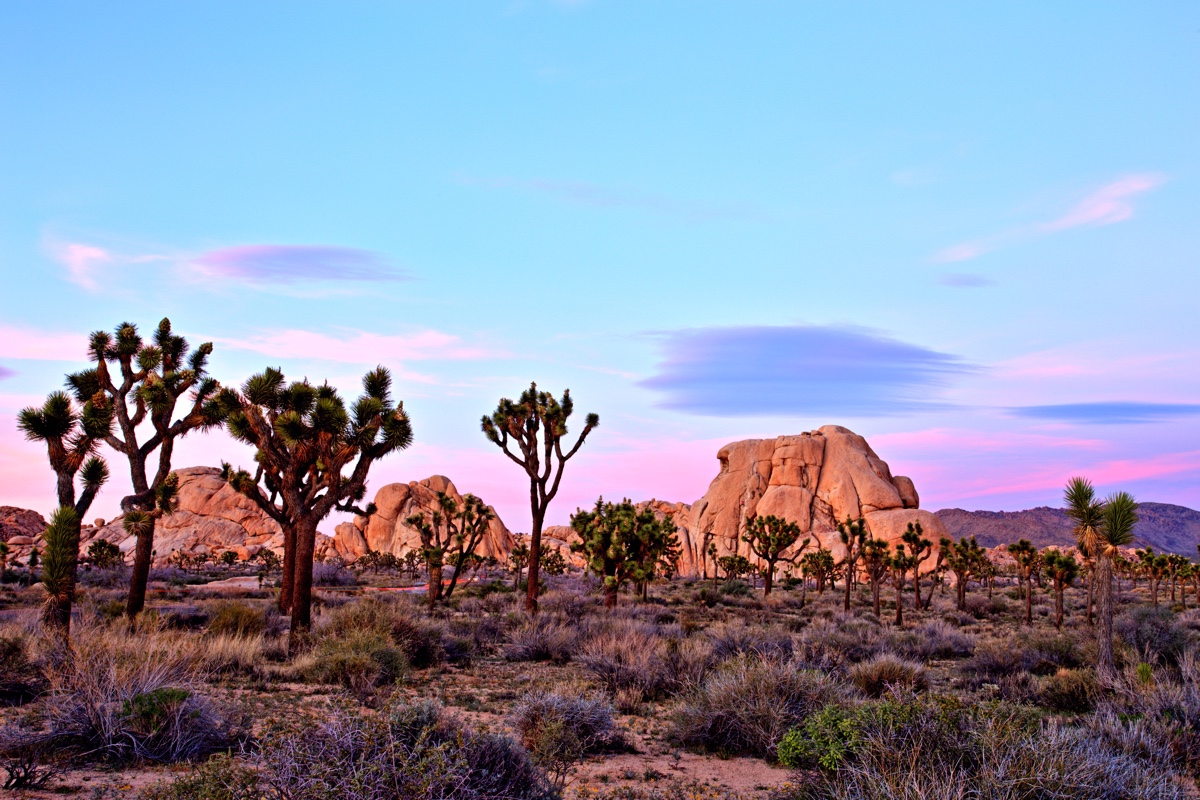Visitors Chainsaw Iconic Joshua Trees in National Park During Gov't Shutdown

Joshua trees are beautiful, but humans can be pretty awful.
That's what park rangers learned during the first week or so of the partial government shutdown.
Joshua Tree National Park is about the size of Delaware, but only eight law-enforcement rangers were tasked with protecting the 1,238 square mile (3,207 square kilometers) wonderland during the shutdown.
The result? Visitors did not play by the rules, cutting illegal roads, chopping down the park's most famous occupants — the Joshua trees — and damaging federal property, according to the nonprofit National Parks Traveler.
"There are about a dozen instances of extensive vehicle traffic off roads and in some cases into wilderness," said the park's superintendent David Smith, as reported by National Parks Traveler. "We have two new roads that were created inside the park. We had destruction of government property with the cutting of chains and locks for people to access campgrounds. We've never seen this level of out-of-bounds camping. Every day use area was occupied every evening." [All Yours: 10 Least Visited National Parks]
Smith added, "Joshua trees were actually cut down in order to make new roads."
Due to the vandalism and sanitation issues, Smith had scheduled a park closure beginning today (Jan. 10). However, instead the park has allocated funds from recreation fees, averting a temporary closure, he said.
Get the world’s most fascinating discoveries delivered straight to your inbox.
"National Park Service officials have determined that by using Federal Land and Recreation Enhancement funds to immediately bring back park maintenance crews to address sanitation issues, the park will be able to maintain some visitor services, including reopening the campgrounds," read a park statement. "The park will also bring on additional staff to ensure the protection of park resources and mitigate some of the damage that has occurred during the lapse of appropriations."
The cut-down trees, however, are irreplaceable, as they take some 60 years to mature and live for more than 500 years. The tree, called Yucca brevifolia, often grows alongside its relative the Mojave yucca, Yucca schidigera — both are part of the Agave family.
As if posing for an album cover or a backdrop in a Dr. Seuss book, Joshua trees look both stoic and whimsical, their spindly, sometimes bushy, limbs twisting out from the trunk. Legend has it that Mormon immigrants who made their way across the Colorado River in the mid-19th century named the trees after the biblical Joshua, "seeing the limbs of the tree as outstretched in supplication, guiding the travelers westward," vegetation specialist Jane Rodgers writes on the National Park Service website.
Read more about the ecological wonders of the Joshua Tree National Park, including its range of sights, from sand dunes and dry lakes to granite monoliths and oases, and two distinct desert regions — the Mojave and Colorado.
- Yellowstone and Yosemite: Two of the World's Oldest National Parks ...
- Lassen Volcanic National Park: The West's Most Beautiful, Least ...
- Top 10 Most Visited National Parks
Originally published on Live Science.
Jeanna Bryner is managing editor of Scientific American. Previously she was editor in chief of Live Science and, prior to that, an editor at Scholastic's Science World magazine. Bryner has an English degree from Salisbury University, a master's degree in biogeochemistry and environmental sciences from the University of Maryland and a graduate science journalism degree from New York University. She has worked as a biologist in Florida, where she monitored wetlands and did field surveys for endangered species, including the gorgeous Florida Scrub Jay. She also received an ocean sciences journalism fellowship from the Woods Hole Oceanographic Institution. She is a firm believer that science is for everyone and that just about everything can be viewed through the lens of science.
 Live Science Plus
Live Science Plus





